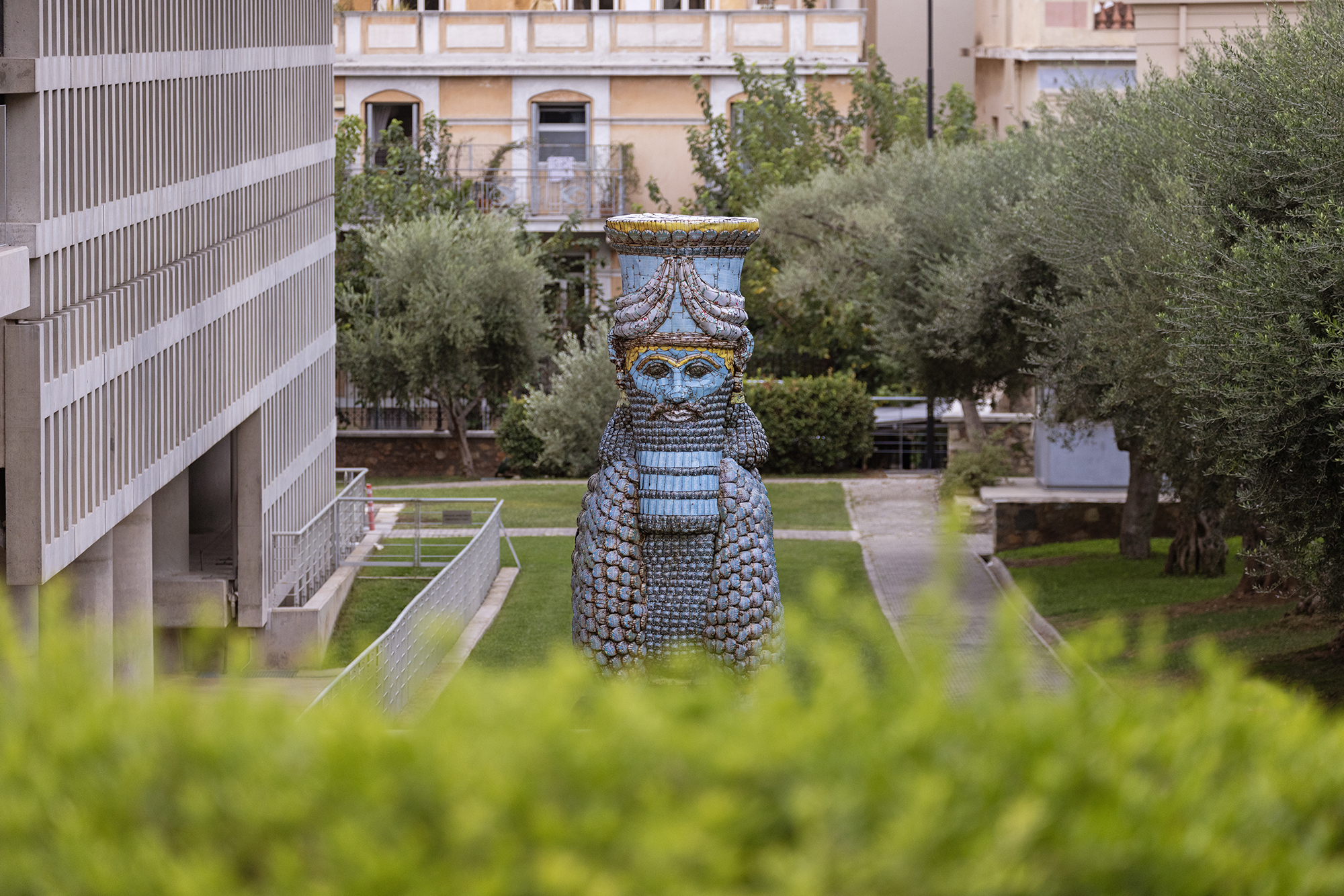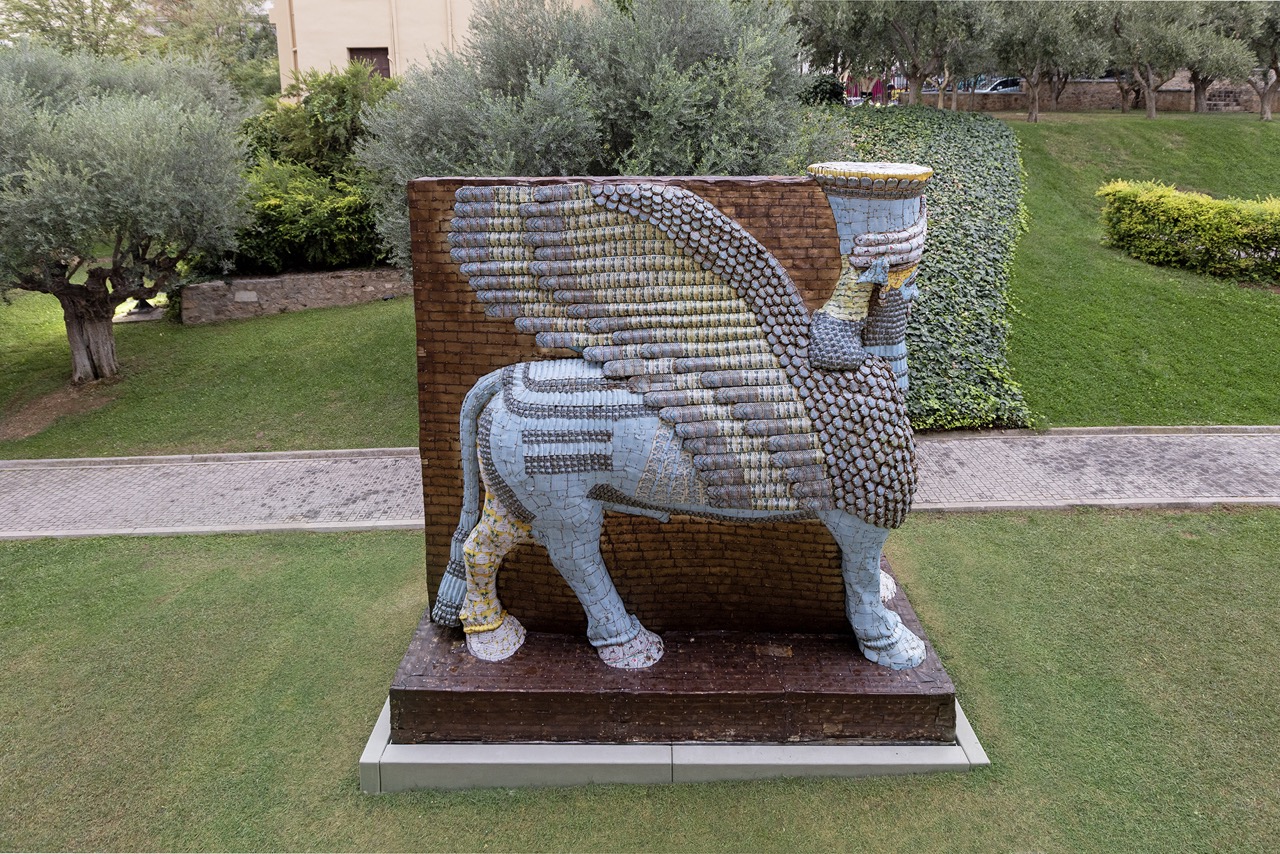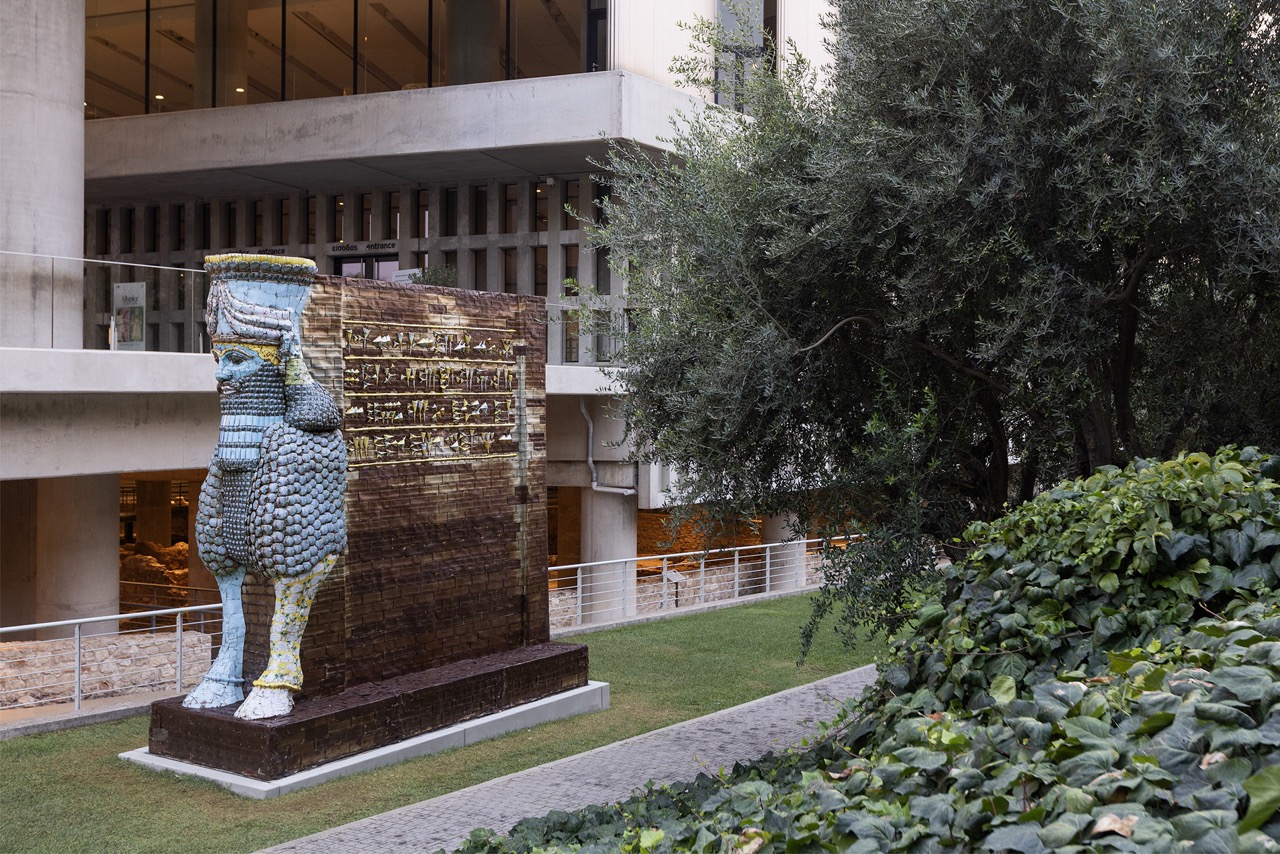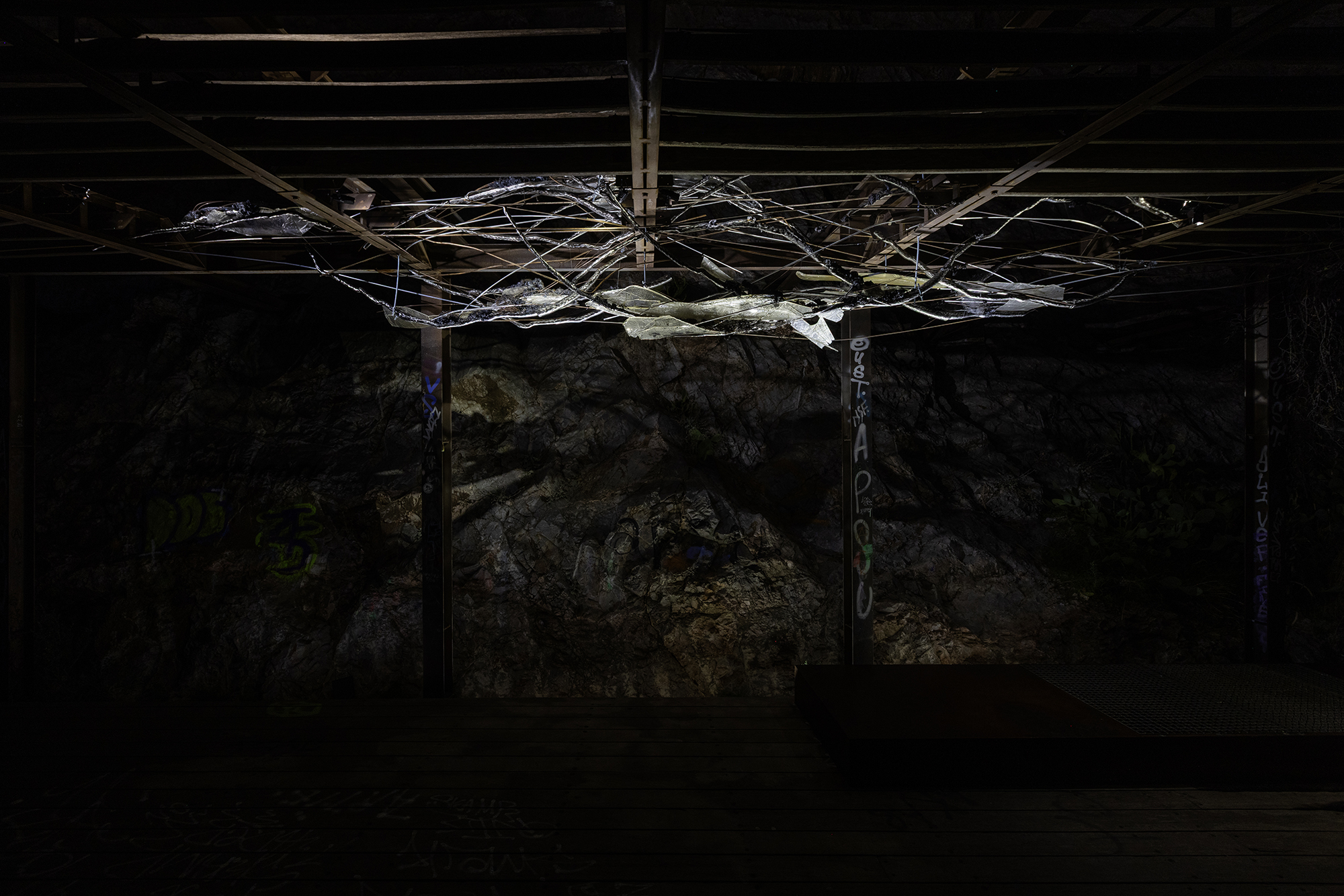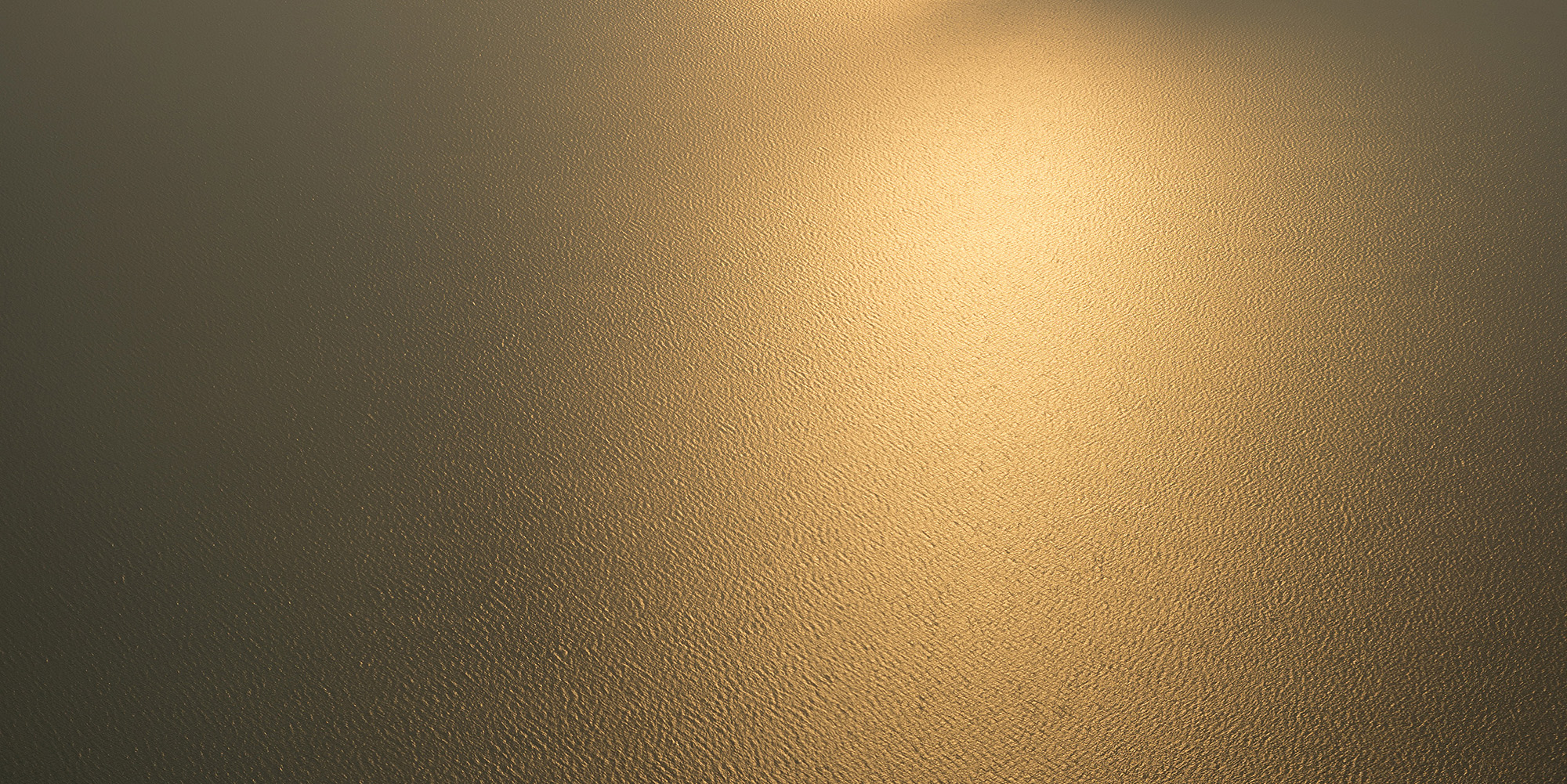DETAILS
LAMASSU OF NINEVEH | MICHAEL RAKOWITZ & ANCIENT CULTURES
06/10/2025 - 31/10/2026
Acropolis Museum | Outdoor Garden
NEON + Acropolis Museum
Curated by Professor Nikolaos Chr. Stampolidis, General Director of the Acropolis Museum and Elina Kountouri, Director, NEON
OPENING
6 October 2025 | 5:30 pm – 10:00 pm (last admission 9:30 pm)
EXHIBITION DURATION
13 May – 31 October 2026
OPENING HOURS
Monday-Tuesday-Wednesday-Thursday | 9 am–5 pm
Tuesday-Wednesday-Thursday | 9 am–8 pm *
Friday | 9 am–10 pm
Saturday-Sunday | 9 am–8 pm
* From April to October on Tuesday, Wednesday and Thursday the Museum opening hours are 9 am – 8 pm
FREE ENTRANCE
MOBILE APP
Scan the QR code to access to discover NEON’s free digital guide on Bloomberg Connects app or click here!


Add to calendar

Share
 Press Release >
Press Release >
NEON and the Acropolis Museum present the second part of the trilogy Michael Rakowitz & Ancient Cultures featuring Lamassu of Nineveh (2018) the Outdoor Garden of the Museum.
Lamassu of Nineveh (2018) is part of Michael Rakowitz’s ongoing series The Invisible Enemy Should not Exist (2006-ongoing) and was originally commissioned for the Fourth Plinth in London’s Trafalgar Square. The series consists of ‘reappearances’ of artefacts looted from the National Museum of Iraq in Baghdad following the U.S. invasion in 2003 or destroyed at other sites in its aftermath. Constructed from empty cans of Iraqi date syrup, the sculpture reconstructs the protective Assyrian deity, a Lamassu: a colossal 4.3-metre winged bull with a human face that once stood at the entrance of the Nergal Gate in ancient Nineveh. The original monument, dating from around 700 BCE, was destroyed in 2015 by ISIS, along with many other artefacts in the Mosul Cultural Museum.
The Athens installation– situated in the surroundings of the Acropolis Museum – brings the Lamassu into an immediate dialogue with multiple layers of history and memory: the archaeological excavation visible beneath the museum, the sacred landscape of the Acropolis above, the modern city around it, and the contemporary architectural space of the museum itself.
Rakowitz uses empty cans of Iraqi date syrup for his Lamassu installation. These cans represent the once-renowned Iraqi industry that was decimated, as well as the human, economic, and ecological devastation wrought by the Iraq wars and their aftermath. Through objects, Rakowitz refers to the people who live alongside them and to their stories. The Lamassu ‘reappears’ and continues its role as guardian in the past, present, and future.
The reverse of the Lamassu features a carved cuneiform inscription that was invisible to viewers because it was cemented to the wall of the Nergal Gate. Here, in its removed and displaced state, the cuneiform is exposed. It translates as: ‘Sennacherib, king of the world, king of Assyria, had the (inner) and outer wall of Nineveh built anew and raised as high as mountain(s).’
For the artist, the reconstruction of the Lamassu becomes an apparition – at once a ghost of the original and a stand-in for the human lives that cannot be restored, for those forced to flee conflict zones and still seeking sanctuary.
The trilogy’s opening chapter, Allspice | Michael Rakowitz & Ancient Cultures, is hosted in the Acropolis Museum Temporary Exhibition Gallery until 31 October 2025.
The trilogy will culminate with an exhibition at the Old Acropolis Museum.


